American Elderberry (Sambucus Canadensis) Profile
Written by Iris
Aug 11 2021
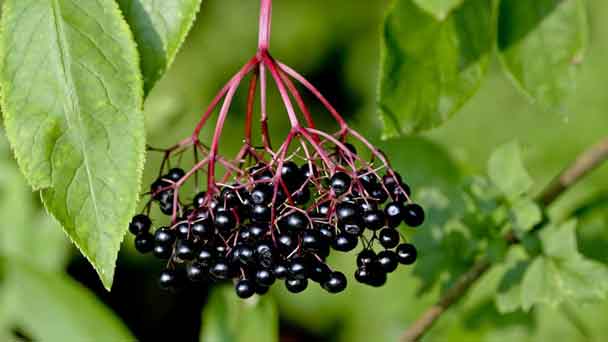
American Elderberry (Sambucus Canadensis) is a deciduous shrub with bright white flowers and small berries. American Elderberry (Sambucus Canadensis) makes a lovely addition to any garden or landscape due to its lush greenery, flowers, and edible fruit. Native to North America, American Elderberry (Sambucus Canadensis) is also known for its culinary qualities-elderberry fruits can be eaten and cooked, but only if they are fully ripe.
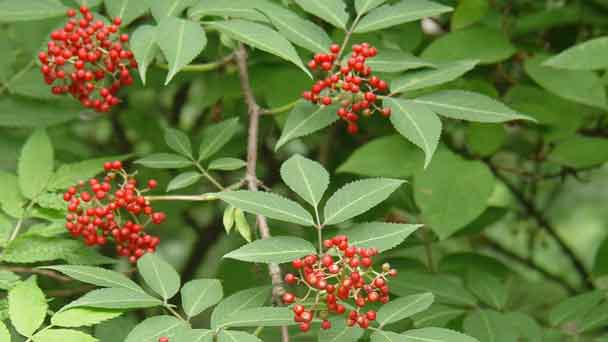
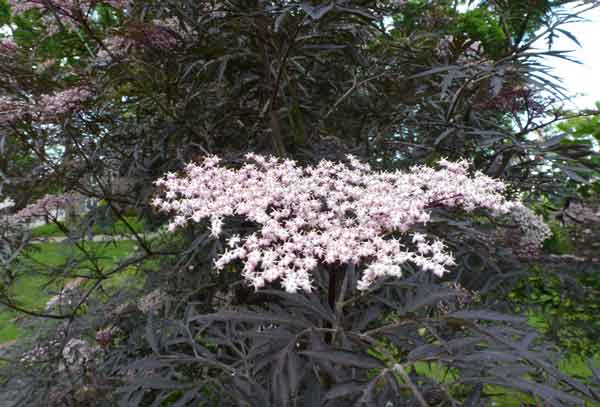
A more sure fire way to propagate is in late fall through early spring, when the American Elderberry is dormant. Select a branch from an elder bush you wish to grow and cut it into six inch pieces. Remove the leaves, keeping the nodes intact, and stick them a pot of sand mixed with peat moss or potting soil.
Soaking the cuttings in a natural willow bark rooting hormone first can help the process, but isn't totally necessary as American Elderberry will readily root on its own.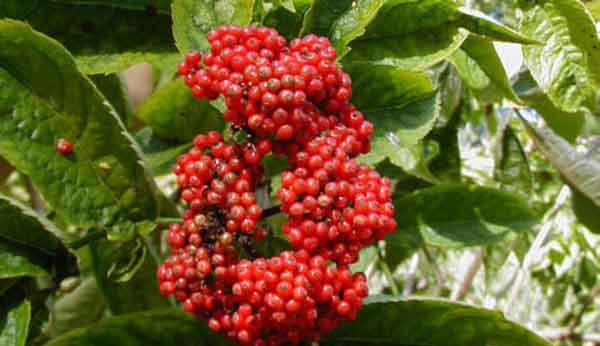
Like most other berries, American Elderberry are chock-full of antioxidants, and contain high amounts of Vitamin C and potassium, which aid your immune system in preventing and fighting off cold and flu symptoms. Unripe elderberries, in addition to the American Elderberry's leaves, twigs, stems and roots, contain traces of cyanide. Make sure American Elderberries are ripe and clean before consumption. The leaves, twigs, stems and roots should be avoided to begin with.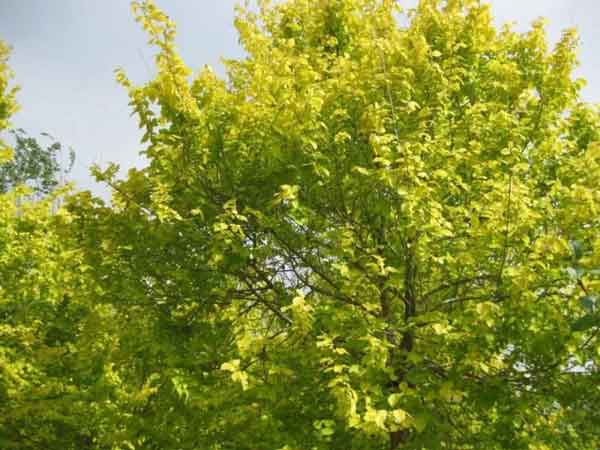
Tomato Ringspot Virus is among the most serious diseases affecting elderberries. It is spread by nematodes and through pollen transfer. Dandelions and some other weeds can also carry this virus. It results in weakened plants, reduced productivity and eventually plant death. To control the virus, the soil should be tested for nematodes prior to planting, and fumigated if necessary. Wild elderberry plants within an area of 100 ft. (31 metres) surrounding cultivated plants should be eradicated also.
Stem and twig cankers (Cytospora, Nectria, and Sphaeropsis) are among the fungus diseases which can be controlled by pruning and burning of infected canes. Powdery mildew can affect canes and berries in late summer and early fall. It results in a grey appearance on the berries, but does not lower the quality of the juice. Leaf spotting fungi, thread blight, root rots, and Verticillium are among the less common diseases.
Pests
Birds are the major pest affecting elderberries. They eat the fruits, and can be a serious problem in small plantings. Control measures include noise cannons, distress calls and prompt harvesting of ripe fruit, but the most effective means is netting.
Elder Shoot Borer
The larva is yellowish white with a double row of black dots across each body segment and a black head. It feeds inside the stem and may cause substantial dieback and loss of canes. Infested and dead canes should be cut out in the fall to destroy overwintering eggs. The adult is a moth with rust red forewings mottled with grey and yellowish grey hind wings.
Sap Beetles
Adult beetles are 5 mm in length, black with four yellow spots on the elytra. The beetles become a problem when fruit is damaged or overmature, as they are attracted by fermenting sugars. Sap beetle larvae can also be a problem. As the blooms form larvae will tunnel into the base of the bloom and feed in the centre of the flower cluster.
Eriophyid Mites
These tiny mites, visible only under microscope, attack the leaves and cause the edges to roll and yellow bands to appear. They can be controlled by dormant sprays, but their damage is normally not serious.
American Elderberry (Sambucus Canadensis) PictureAmerican Elderberry (Sambucus Canadensis) InfoEcological Habits of American Elderberry (Sambucus Canadensis)American Elderberry (Sambucus Canadensis) Distribution AreaHow to Grow and Care for American Elderberry (Sambucus Canadensis)Uses of American Elderberry (Sambucus Canadensis)
American Elderberry (Sambucus Canadensis) Picture

American Elderberry (Sambucus Canadensis) Info
| Botanical Name | Sambucus canadensis |
| Common Name | American Elderberry |
| Plant Type | Shrub |
| Mature Size | 10–15 feet |
| Sun Exposure | Full sun to partial shade |
| Soil Type | Rich, well-draining, loamy |
| Soil pH | Acidic |
| Bloom Time | Spring |
Ecological Habits of American Elderberry (Sambucus Canadensis)
American elderberry is native to New Hampshire and can be found growing in moist soils at forest or wetland edges. american elderberry can grow five to ten feet tall and wide and has gray barked stems with white pithy centers. Groups of stems of American Elderberry emerge from the roots and develop an arching and spreading habit. The American Elderberry's opposite leaves are compound with five to 11 leaflets that have serrated edges. Large, flat-topped, white flowers are borne between mid-June and mid-July. These give way to purple-black, berry-like fruits in August through September.American Elderberry (Sambucus Canadensis) Distribution Area
Sambucus canadensis, the American Elderberry, is a species of elderberry native to a large area of North America east of the Rocky Mountains, south to Bolivia. American Elderberry grows in a variety of conditions including both wet and dry soils, primarily in sunny locations.
How to Grow and Care for American Elderberry (Sambucus Canadensis)
How to Grow American Elderberry (Sambucus Canadensis)
- With Seeds
- With Cuttings
A more sure fire way to propagate is in late fall through early spring, when the American Elderberry is dormant. Select a branch from an elder bush you wish to grow and cut it into six inch pieces. Remove the leaves, keeping the nodes intact, and stick them a pot of sand mixed with peat moss or potting soil.
Soaking the cuttings in a natural willow bark rooting hormone first can help the process, but isn't totally necessary as American Elderberry will readily root on its own.
How to Care for American Elderberry (Sambucus Canadensis)
- Light
- Soil
- Water
- Temperature and Humidity
- Fertilizer
- Pruning

Uses of American Elderberry (Sambucus Canadensis)
American Elderberry are a versatile plant, with tons of uses. Obviously, the American Elderberry flowers will look great in any part of your yard or garden (especially a landscape setting), but you'll get the most practical use out of the berries, which are mainly used as an ingredient in syrups, pies, extracts, jams, wines and champagnes. The flowers can also be ground up for the same uses. Just make sure the berries are ripe and properly cleaned before you use them, just like any other fruit.Like most other berries, American Elderberry are chock-full of antioxidants, and contain high amounts of Vitamin C and potassium, which aid your immune system in preventing and fighting off cold and flu symptoms. Unripe elderberries, in addition to the American Elderberry's leaves, twigs, stems and roots, contain traces of cyanide. Make sure American Elderberries are ripe and clean before consumption. The leaves, twigs, stems and roots should be avoided to begin with.

American Elderberry (Sambucus Canadensis) Common Pests/Diseases
DiseasesTomato Ringspot Virus is among the most serious diseases affecting elderberries. It is spread by nematodes and through pollen transfer. Dandelions and some other weeds can also carry this virus. It results in weakened plants, reduced productivity and eventually plant death. To control the virus, the soil should be tested for nematodes prior to planting, and fumigated if necessary. Wild elderberry plants within an area of 100 ft. (31 metres) surrounding cultivated plants should be eradicated also.
Stem and twig cankers (Cytospora, Nectria, and Sphaeropsis) are among the fungus diseases which can be controlled by pruning and burning of infected canes. Powdery mildew can affect canes and berries in late summer and early fall. It results in a grey appearance on the berries, but does not lower the quality of the juice. Leaf spotting fungi, thread blight, root rots, and Verticillium are among the less common diseases.
Pests
Birds are the major pest affecting elderberries. They eat the fruits, and can be a serious problem in small plantings. Control measures include noise cannons, distress calls and prompt harvesting of ripe fruit, but the most effective means is netting.
Elder Shoot Borer
The larva is yellowish white with a double row of black dots across each body segment and a black head. It feeds inside the stem and may cause substantial dieback and loss of canes. Infested and dead canes should be cut out in the fall to destroy overwintering eggs. The adult is a moth with rust red forewings mottled with grey and yellowish grey hind wings.
Sap Beetles
Adult beetles are 5 mm in length, black with four yellow spots on the elytra. The beetles become a problem when fruit is damaged or overmature, as they are attracted by fermenting sugars. Sap beetle larvae can also be a problem. As the blooms form larvae will tunnel into the base of the bloom and feed in the centre of the flower cluster.
Eriophyid Mites
These tiny mites, visible only under microscope, attack the leaves and cause the edges to roll and yellow bands to appear. They can be controlled by dormant sprays, but their damage is normally not serious.
American Elderberry (Sambucus Canadensis) Companion Plants
White pine trees or quaking aspen are good American Elderberry companion plants, if you want something taller than the shrubs. For a plant about the same size, consider winterberry. Remember that elderberries do not like their roots disturbed once they are established.Latest Updated
- Benefits of Bugleweed - 7 Science-backed Health Benefits
- Bugleweed Dangers & Side Effects - Is It Poisonous?
- How to Plant Evergreen Trees - What You Should Know
- When to Plant Evergreens - Grow Guide for Evergreen Trees
- 12 Wonderful Evergreen Shrubs for Your Garden
- 12 Popular Evergreen Plants with Pictures for Beginners
- When And How To Prune A Lilac Bush Like a Pro
- How to Grow & Care for Lilac Vine (Hardenbergia Violacea)
- Japanese Lilac Tree (Syringa Reticulata) Care & Propagation Guide
- Shumard Oak Pros and Cons - What to Know
Popular Articles
- Winter maintenance of Antirrhinum Majus
- How to Grow Terminalia Mantaly Tree
- How to Grow and Care for Crossostephium Chinense
- How to grow Antirrhinum Majus in spring
- Peristeria Elata (Dove Orchid) Profile: Info & Care Guide
- Underwatered Snake Plant (Sansevieria Trifasciata) - Signs And How To Fix
- How to Care for Brazilian Jasmine Plant (Mandevilla Sanderi)
- How to Grow & Care for Graptopetalum Purple Delight in Summer
- Rosa Chinensis (China Rose): Plant Growing & Care Tips
- How to Care for Baby Sun Rose (Aptenia Cordifolia)